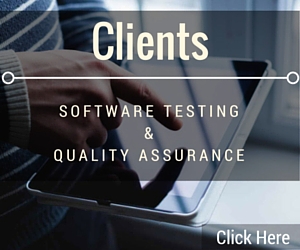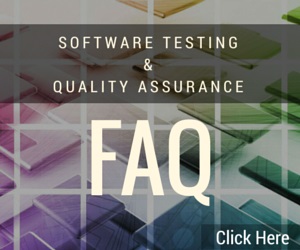Software as a Medical Device (SaaMD) has revolutionized the healthcare industry, enabling innovative diagnosis, treatment, and patient care solutions. However, this shift brings significant responsibilities, especially regarding application testing, healthcare software testing, and software quality assurance.
diagnosis, treatment, and patient care solutions. However, this shift brings significant responsibilities, especially regarding application testing, healthcare software testing, and software quality assurance.
Ensuring the safety, reliability, and efficacy of SaaMD applications is paramount, as these products can directly impact patient outcomes. This article delves into the critical testing considerations for SaaMD applications to meet regulatory standards and ensure high-quality performance.
1. Regulatory Compliance and Standards
SaaMD applications are subject to stringent regulatory requirements, such as those enforced by the FDA in the United States or the European Medicines Agency (EMA) in Europe. Compliance with standards like ISO 13485, ISO 14971, and IEC 62304 is essential. These standards dictate rigorous testing protocols to ensure the software’s safety and effectiveness.
Key Considerations:
- Establish a robust software quality assurance process to meet regulatory requirements.
- Implement a risk management strategy to identify, assess, and mitigate risks associated with the software.
- Ensure traceability between requirements, design, testing, and risk management activities.
2. Comprehensive Application Testing
Application testing for SaaMD involves multiple layers, from unit testing to system testing, to ensure the software functions as intended in all scenarios. Given the potential impact on patient health, testing must be exhaustive and cover standard and edge cases.
Key Considerations:
- Functionality Testing: Validate that the software performs all intended functions correctly.
- Usability Testing: Ensure the software is user-friendly for healthcare providers and patients, reducing the risk of user errors.
- Performance Testing: Test the application under various conditions to ensure it can handle real-world usage scenarios without degradation in performance.
3. Healthcare Software Testing Specifics
Healthcare software testing differs from conventional software testing due to the sensitive nature of the data involved and the potential consequences of software failure. Testing must be thorough and focus on data integrity, security, and privacy.
Key Considerations:
- Data Security and Privacy: To protect patient data, ensure the software complies with HIPAA (USA) or GDPR (Europe) regulations.
- Interoperability Testing: Validate that the software can interact correctly with other medical devices and healthcare systems, maintaining data consistency and accuracy.
- Clinical Validation: In some cases, clinical testing may be required to demonstrate that the software performs accurately in a real-world medical environment.
4. Automation and Continuous Testing
In the dynamic field of SaaMD, where updates and changes are frequent, automation and continuous testing play crucial roles in maintaining software quality assurance. Automated testing can significantly reduce the time and cost associated with repetitive testing tasks, while continuous testing ensures ongoing compliance with regulatory requirements as the software evolves.
Key Considerations:
- Automated Regression Testing: Implement automated tests to identify issues introduced by new code changes quickly.
- Continuous Integration/Continuous Deployment (CI/CD): Integrate continuous testing within the CI/CD pipeline to detect and address issues as early as possible.
- Test Coverage: Ensure that automated tests cover various scenarios, including edge cases and potential failure modes.
5. Post-Market Surveillance and Maintenance
Even after deployment, SaaMD applications require ongoing monitoring and maintenance to ensure continued compliance and performance. Post-market surveillance involves collecting and analyzing data from the field to detect any issues that may arise after the software is in use.
Key Considerations:
- Monitoring: Implement tools to monitor the software’s performance in the field, identifying anomalies or potential issues early.
- Updates and Patches: Update the software regularly to address vulnerabilities, improve performance, and maintain compliance with evolving regulations.
- User Feedback: Collect and analyze feedback from healthcare providers and patients to identify areas for improvement.
Conclusion
Testing considerations for Software as a Medical Device (SaaMD) are complex and multifaceted, requiring a deep understanding of regulatory requirements, healthcare-specific challenges, and the latest testing methodologies. A robust approach to application testing, healthcare software testing, and software quality assurance is essential to ensure that these applications are safe, effective, and reliable in the demanding healthcare field. By addressing these considerations, developers can contribute to better patient outcomes and advance the future of healthcare technology.

 With Experience in Quality Assurance & Testing Desktop Software, Mobile Apps, Websites & Web Applications for Nearly 30 Years, Beta Breakers has become the Premier Software Quality Assurance Labs and Application-Testing Provider -
With Experience in Quality Assurance & Testing Desktop Software, Mobile Apps, Websites & Web Applications for Nearly 30 Years, Beta Breakers has become the Premier Software Quality Assurance Labs and Application-Testing Provider - 

When I originally commented I clicked the -Notify me when new comments are added- checkbox and now each time a comment is added I get four emails with the same comment. Is there any way you can remove me from that service? Thanks!